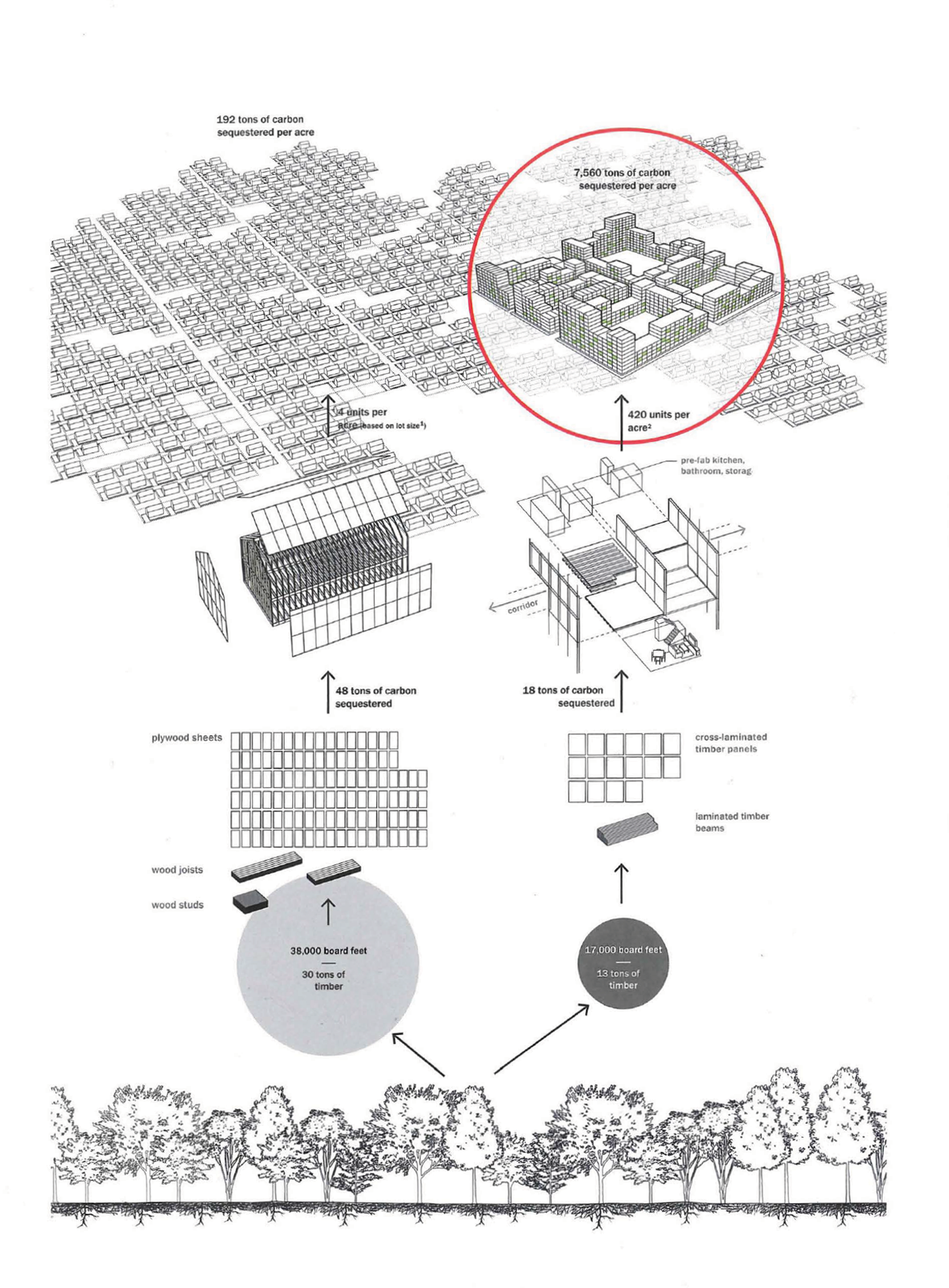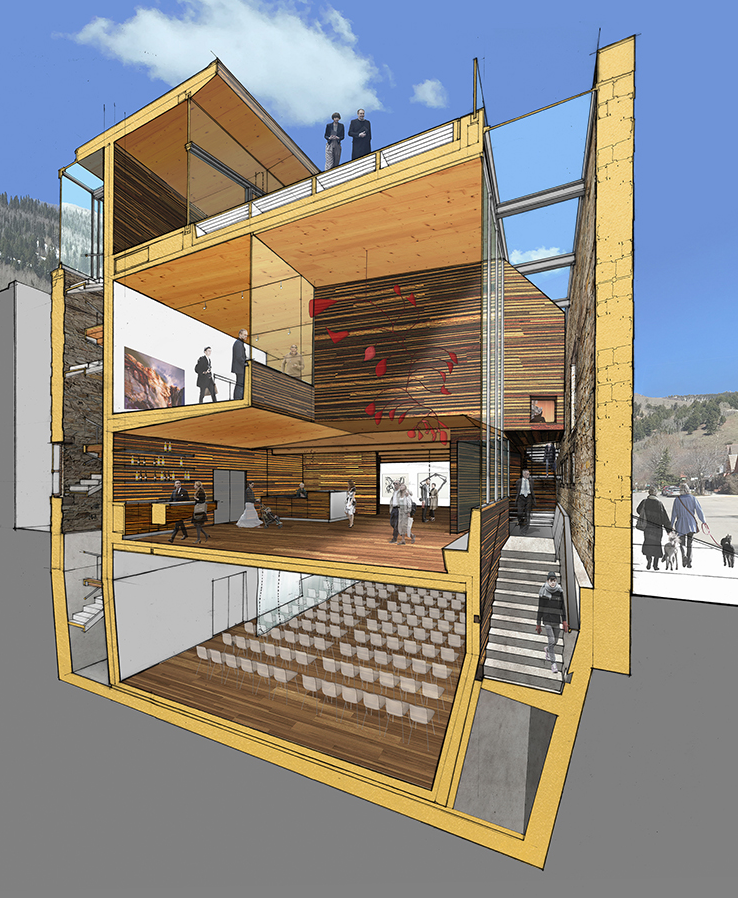
"Redirecting Timber to the City," Timber in the City: Design and Construction in Mass Timber, page 19. Courtesy of Alan Organschi.

Rendering of the Telluride Center for the Arts, courtesy of LTL Architects.
The Skyscraper Museum continued its Mass Timber semester series, which brings together key voices in the Mass Timber movement to reflect on its short history, current condition, and promising future, with an in-person program held at the office of the architecture and engineering firm SOM, at 7 World Trade Center in lower Manhattan.
A decade ago, concerns about energy consumption in the building sector focused on operational carbon – particularly, emissions associated with heating and cooling. Today, though, the discussion has shifted in part to embodied carbon, which can also be called “upfront carbon,” because it is carbon released into the atmosphere before the building even opens its doors. Embodied carbon measures the first-stage “carbon cost” of producing energy-intensive materials such as concrete and steel, of transporting them to the site, and of other processes that require burning fossil fuels used to construct a building.
Embodied carbon has become an increasingly important concern of scientists, engineers, and architects. Driven by the urgency of global warming and a growing understanding of the significant role new construction plays in climate change, designers are becoming more conscious of the carbon cost of the materials they choose. For many, engineered wood – considered in the full picture of responsibly managed forests and whole life-cycle analysis – offers at least a partial answer.
While the concept of embodied carbon is still not widely understood by the public, it has a history in the architectural community that our program explored. Longtime thought leaders David Lewis and Alan Organschi discussed the role of research in both academic and professional practice in advancing ideas about low-embodied carbon materials, such as Mass Timber. After their presentations, they engaged in conversation with writer and architecture critic Fred A. Bernstein.
The Museum thanks SOM for the generous donation of their event space for this program.
David Lewis is principal of LTL Architects, founded in 1997 with twin brother Paul Lewis and Marc Tsurumaki. He is co-author of the only book on the architectural section, Manual of Section. He holds academic positions as Professor at Parsons School of Design and Adjunct Professor of Architecture at the University of Limerick, Ireland. He also served as Conference Chair of "Timber in the City 3: Opportunities for Architecture and Urbanism Conference" at Parsons School of Design.
Alan Organschi is a principal and partner at GOA, an architectural practice in New Haven, Connecticut. He continues as a senior member of the faculty at the Yale School of Architecture and directs the Yale Building Lab. He has written and lectured extensively on the carbon storage benefits of biogenic material substitution and circular economic strategies in urban building. He is a co-author of the recently published book Carbon: A Field Manual For Building Designers and the scientific paper “Buildings as a Global Carbon Sink."
Fred A. Bernstein is a writer and architecture critic for numerous publications including the New York Times, Architectural Record, and The Architect's Newspaper. He is the 2009 winner of the Oculus Award, given each year by the New York chapter of the American Institute of Architects for excellence in architecture writing.
The video begins with a welcome and introductions by Museum Director Carol Willis, followed by the presentations of Alan Organschi and David Lewis. After their talks, they are joined in dialogue by journalist Fred A. Bernstein. Carol Willis's preliminary overview of the series is appended at the end of the video.